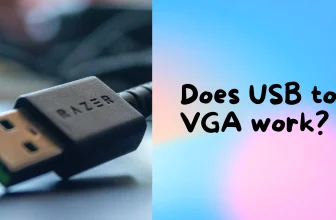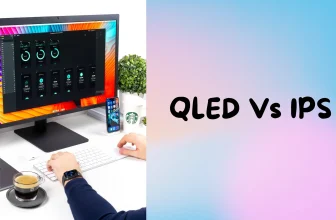Nanocell vs QLED: What Are The Main Differences And Similarities?
Nanocell vs QLED is the latest technology of today’s modern TVs. If you are interested in in-depth issues, there will undoubtedly be many angles to exploit.
Those who buy TVs will usually only care about the picture quality of these two technologies. In this article, let’s compare the types of monitors to know which one is more worthy of your investment!
Screen Quality Overview

Screen quality is the point that you pay attention to the most when choosing a TV. To evaluate a good screen or not also depends on many factors. Let’s look at some of the most recognizable elements of TVs!
Reflexion
In general, when placed in a light environment, both lines are not too prominent. Light reflection is relatively poor, and there is glare in the center of the screen.
The Nanocell screen is a bit better than QLED. This screen will be bright and has better adaptation than the surrounding environment’s brightness.
Furthermore, Nanocell’s video technology also adapts to Dolby’s vision. Meanwhile, the competitor only accepts HDR 10 and HLG.
View
The viewing angle will indicate the width of the screen. If your home has ample space, choosing a TV with a good viewing angle is necessary to ensure the view from many angles.
Nanocell TV is equipped with an IPS panel to support your viewing angle better. So even if you sit sideways at the TV screen, the picture quality will not be too affected.
QLED uses VA panels, so the field of view will be narrower than Nanocell. However, if you only buy to use in the bedroom or the space is not too many people, this is not too big of a problem.
SDR image
SDR is an indicator of whether the image quality is stable or not. In general, both types of monitors produce sound quality indicators.
However, QLED is still slightly better by contrast ratio. The Nanocell side uses Edge-Lit Local Dimming edge lights to worsen the contrast.
Both types of monitors do an excellent job stabilizing because there is no high dynamic range incurred. However, in terms of energy, QLED consumes more, up to 77 kWh/1000 hours.
HDR images
The HDR image compares the number of quantum dots on the screen. In terms of picture mode in general, QLED seems to have an advantage over Nanocell.
The color space coverage of both types is almost equal, so QLED has the upper hand thanks to the contrast ratio. A small minus point is that it does not have Dolby Vision, but this will not be a big point compared to HDR.
Here, you can watch this video for a more detailed comparison:
Performance Overview
In addition to screen quality, you’ll probably also care about performance in everyday applications.
Movies performance

As compared above, Nanocell takes up more points when used in a light environment. However, watching movies is usually in the good morning or in an environment that doesn’t use a lot of lights. So, QLED is better with a VA panel.
Both support a variety of audio formats and keep the same sound, so you only need to care about the environment that will affect the picture quality.
Gaming performance

If you want a TV for comfortable gaming on a big screen, QLED can’t be ignored. Both support refresh rate and 4K quality up to 120 fps.
The two TVs are similar, but the difference will be in the input lag. While the 4K @ 60 Hz + HDR input only needs ca. 11ms, Nanocell needs to shift. 16ms.
It is still the same information but with better quality – 120Hz. Another difference is that QLED only allows you to connect 1 HDMI end; Nanocell can support two connections simultaneously.
Watching sports performance
Many sports enthusiasts and demand make up the majority and have a top interest when watching these programs.
The two devices do not have too many points to compare regarding this feature. However, if viewed by many people, Nanocell will prevail.
|
Nanocell |
QLED | |
|
Contrast |
3400 :1 |
7400 :1 |
|
4K @ 60Hz + HDR input Delay |
ca. 16ms |
ca. 11ms |
|
4K @ 120Hz Input Delay |
ca. 5ms |
ca. 6ms |
|
HDMI 2.0 |
2 |
3 |
|
HDR Image Quality |
74% |
72% |
|
Max. Brightness |
720 Nits |
590 Nits |
|
Energy consumption SDR |
67 kWh / 1.000 Hours |
77 kWh / 1.000 Hours |
Conclusion: Nanocell vs QLED – Which Is Better?
Above are the general reviews of Nanocell and QLED screens. They are all monitors with the best technology available today, so you won’t have to worry too much when choosing one of them.
You can consider the price if you don’t care too much about quality or special features. Nanocell technology TVs will have a better price than QLED TVs.
Pete is a software engineer who currently works full-time managing MarsScreen.com. On the side, he enjoys coding his own projects and spending time with his wife and two dogs. When he's not working or hanging out with family and friends, you can find him playing the guitar or running. My Instagram.






